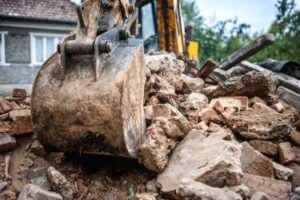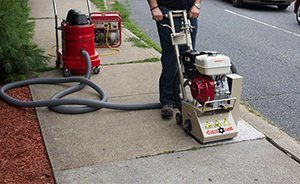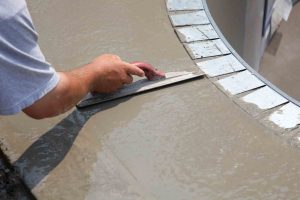Southern California is paradise—most of the time. One of the not-so-wonderful aspects of living in the area is dealing with the reality of earthquakes. Earthquakes are a daily threat to California residents; out of the ten largest earthquakes ever experienced in the continental US, five of them were in California.
This is why buildings in the area must be built to survive strong earthquakes. But even if a building is designed to survive a big quake, it will likely sustain damage. In fact, even smaller earthquakes can cause problems with the concrete in your home.
So, what should you look for the next time you feel tremors near your home? Check out the 3 types of concrete damage caused by earthquakes in California below.
1. Lines, Splits, and Fractures
With a major earthquake, chances are the damage sustained will be obvious. But with smaller quakes, the damage inflicted isn’t always as clear. One of the most common types of damage to find after a smaller earthquake is a line, split, or fracture in the concrete. This may be faint, almost looking as if it were drawn onto the concrete using a pencil. However, it can also be quite large, causing a chasm within the concrete. The older your building is, the more likely it is to sustain this type of damage, but even newer buildings that meet current code can suffer this damage.
2. Foundational Shifts
Most homes sit on a concrete foundation. When the ground moves, so does the foundation your house is sitting on. As you can imagine, this can cause a multitude of problems and can be extremely dangerous for anyone inside or around your home. Noticing foundational shifts isn’t always easy. While a large shift will be noticeable, invisible shifts can be just as problematic.
So, what signs should you look for? Well, if you notice those lines, splits, and fractures mentioned above, they are a sign that something might be wrong with the foundation. Also, you might notice that as you walk in your home, the floor slopes, the ceiling is sagging, or the walls don’t quite feel straight. If you notice any of these signs, leave your home immediately and have an expert assess the damage. However, even if you notice no signs at all, it’s a good idea to have concrete experts come and check the foundation of your home. It’s better to be safe than sorry.
3. Crumbling Masonry
Finally, you might notice that the concrete and other masonry is crumbling. Unlike other building materials, masonry is not flexible. This means that when a force tries to make it bend, it snaps instead. As such, after the ground shifts during an earthquake, it can cause the concrete to snap and crumble. If you notice this with the structure of your home, leave your home immediately and contact an expert. If it’s outside your home, such as with hardscaping in the yard, tape off the area and prevent your family from accessing it until you are able to get concrete experts to come and fix it.
Do You Need an Assessment of Your Concrete?
Our team is happy to help. Simply give us a call and we will schedule a visit to your home. Remember: your health and safety is everything. Allow us to ensure that your home is safe for everyone inside.



